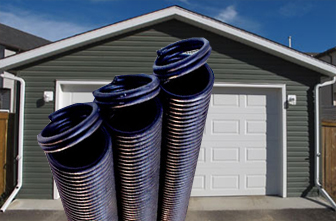The Process of Garage Door Spring Replacement
If you are going to replace your garage door torsion springs yourself, you had better spend some time going over the steps. If you have never tackled this particular job before, you can be getting yourself into a dangerous situation, unless you know what to expect ahead of time when performing a garage door spring replacement.
An overhead automatic garage door works by an electric motor that moves the door up and down on two tracks located on either side of the garage door opening at the front of the garage. There is a lever attached to the motor, which is located on the ceiling of the garage, and is attached to the door. The motor then moves the door up and down.

At the rear of the garage, located near the ceiling, is a high-tension spring that runs parallel with the door. The purpose of the spring to ease the load off of the motor by coiling and uncoiling. The torsion of the spring is set at a high tension.
The replacement of garage door springs is dangerous, even for experienced workers who make their living at this particular skill. Using the wrong tools, or using improper procedures can be dangerous to the point where you could lose hands, limbs or even lose your life. Property damage can also occur.
If you have any doubts about your ability to perform this procedure, you had better back off and call in a professional. If you have never worked on a garage door spring before, it would really be advisable that you not start out cold with no training. Even if you follow all of the proper procedures, the winding cone, or the part of the spring that is still under tension can literally explode and hit you in the head, the eyes and wrap your hand and clothing in the spring.
There is a definite procedure in the replacement of a garage door spring, and it is always advisable to replace the spring with the door closed, as this is the position of the door that the spring has the least tension.
The unwinding of the spring when you are replacing it and then the winding of the spring when the new one is put on are the two most dangerous times when there is a hazard potential that you may not be able to avoid.
As you can well imagine, even trained professionals who work on garage door springs each and every day, do have to take their time and follow a very detailed procedure when replacing the springs on a garage door.
One great tip that is somewhat universal if you know that your springs are broken, and you feel certain that you will need to have a garage door spring replacement, is to be sure that you do not open and close your garage door, until the springs get replaced.
Wooden doors especially are very heavy and if you open or close the door you will most likely damage the opener itself.


 CALL NOW :
CALL NOW : 

